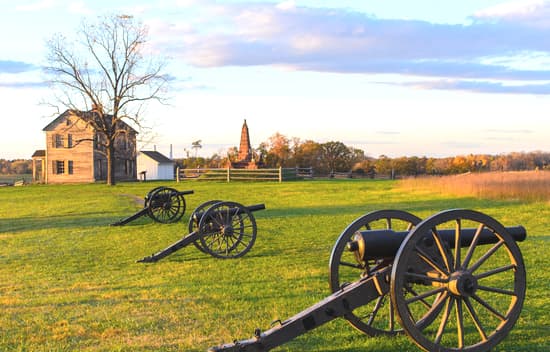Daniel Emmett’s “Dixie” and Julia Ward Howe’s “Battle Hymn of the Republic,” 1859 and 1861
Use this primary source text to explore key historical events.
Suggested Sequencing
- Use this Primary Source once students have a strong understanding of the sectionalism between the North and the South.
Introduction
“Dixie” (Source A) was likely written by Daniel Emmett, an Ohioan who introduced the song during a performance in New York City. “Dixie” was written for performance in a minstrel show and grew in popularity in the 1850s. Minstrel shows consisted of spoken and musical acts performed by white people in blackface makeup, though some African American performers and groups toured under the direction of white people. Though heavily influenced by African American traditions in singing, dancing, and music, minstrel shows stereotyped African Americans as clumsy or dim-witted. After the Civil War, African American musical groups such as the Fisk Jubilee Singers worked to overcome these stereotypes by touring extensively and exposing audiences to the dignity and gravitas of African American music, such as the Negro spiritual. Before the Civil War, “Dixie” and the minstrel shows in which it was featured were popular across the country. After the outbreak of war, the Confederacy adopted the tune as its marching song.
The de facto marching song of the Union, “Battle Hymn of the Republic” (Source B), was written by Julia Ward Howe in February 1862. The tune of the song was borrowed from an old Methodist hymn. Howe was inspired to write new lyrics to the song after touring Union camps with her husband, an abolitionist doctor and member of President Abraham Lincoln’s Military Sanitary Commission. After the Civil War, Howe became very active in the women’s suffrage movement. She continued to write, but “Battle Hymn of the Republic” remained her most popular creation.
Sourcing Questions
- For what purpose was “Dixie” originally written? The “Battle Hymn of the Republic?”
- Given these differences in purpose, predict how the tone of each song will differ.
- Minstrel shows, where songs like “Dixie” were originally performed in blackface, were popular throughout the country before the Civil War. “Dixie” is sung from the perspective of an enslaved man. What does this reveal about attitudes toward African Americans prior to the Civil War?
Source A: “Dixie,” 1859
| Text |
|---|
| I wish I was in the land of cotton, Old times dar am not forgotten, Look away! Look away! Look away! Dixie Land. In Dixie Land whar’ I was born in, Early on one frosty mornin’, Look away! Look away! Look away! Dixie Land. |
| CHORUS: Den I wish I was in Dixie, Hoo-ray! Hoo-ray! In Dixie land, I’ll take my stand to live and die in Dixie; Away, away, away down south in Dixie, Away, away, away down south in Dixie. . . . |
| Now here’s a health to the next old Missus, And all the gals dat want to kiss us; Look away! Look away! Look away! Dixie Land. But if you want to drive ‘way sorrow, Come and hear dis song to-morrow, Look away! Look away! Look away! Dixie Land. |
Source B: “Battle Hymn of the Republic,” 1861
| Vocabulary | Text |
|---|---|
| vintage(n): in this context, the place in which grapes are grown and wine is produced grapes of wrath: refers to a passage in the Book of Revelation in the New Testament that refers to the final judgement of the wicked and destruction of Earth |
Mine eyes have seen the glory of the coming of the Lord: He is trampling out the vintage where the grapes of wrath are stored; He hath loosed the fatal lightning of his terrible swift sword: His truth is marching on. |
| [Chorus] Glory, glory, hallelujah! Glory, glory, hallelujah! Glory, glory, hallelujah! His truth is marching on. |
|
| I have seen Him in the watch-fires of a hundred circling camps; They have builded Him an altar in the evening dews and damps; I can read His righteous sentence by the dim and flaring lamps. His day is marching on. [Chorus] |
|
| He has sounded forth the trumpet that shall never call retreat; He is sifting out the hearts of men before his judgment-seat: Oh! be swift, my soul, to answer Him! Be jubilant, my feet! Our God is marching on. [Chorus] |
|
| transfigure(v): to transform into something more beautiful or elevated | In the beauty of the lilies Christ was born across the sea, With a glory in his bosom that transfigures you and me: As he died to make men holy, let us die to make men free, While God is marching on. [Chorus] |
Comprehension Questions
- What does this lyric signify about the singer’s feelings about the South?
- What do the lyrics suggest will drive away sorrow?
- How does the author put God on the side of the Union in this first stanza?
- What was the significance of the first line in this section?
- Who does “They” refer to in this line? What are “They” doing in this analogy?
- How do these two lines inspire the listener?
- Explain the analogy in this line.
Historical Reasoning Questions
- Compare the message of the two songs.
- Listen to each song and follow along with the lyrics. Which do you think is more inspirational as a military song? Explain.
Battle Hymn of the Republic (lyrics) https://www.poetryfoundation.org/poems/44420/battle-hymn-of-the-republic
Battle Hymn of the Republic (audio) https://www.youtube.com/watch?v=p5mmFPyDK_8
Dixie (lyrics) http://chnm.gmu.edu/loudountah/activities/pdf/DixieSongLyrics1.pdf
Dixie (audio) https://forums.civfanatics.com/threads/battle-hymn-of-the-republic-or-dixie.343242/

